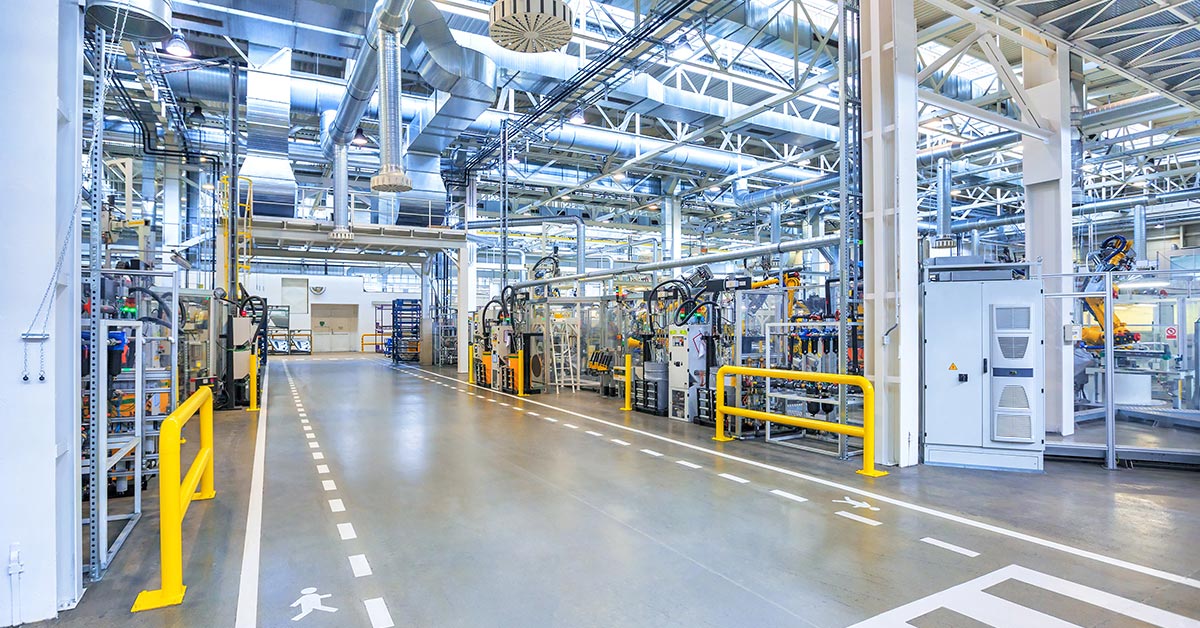Industrial environmental air quality sensors measure the presence of contaminants in the ambient environment, along with several other measurement functions:
- Temperature
- Pressure
- Humidity
- Gas resistance
Why is air quality monitoring a critical concern in industrial facilities? The measurements and metrics that air quality sensors provide can serve as frontline indicators for potential issues that may impact:
- Production throughput and efficiency
- Maintenance efficiency
- Personnel safety
- Equipment health and service life
In facilities in which close coordination between personnel, equipment, raw materials and finished products is necessary to ongoing efficient and productive operations, indoor air quality monitoring is required to ensure that productivity remains at peak levels, downtime is minimized and employees remain safe.
What do air quality sensors test for?
Air quality sensors can facilitate a wide range of tests. These include:
- Particulate matter presence, including varying levels and sizes of particulates as per equipment capabilities — Typical particulate monitoring covers PM1, PM2.5, PM10, PM100 and more. Particulates that may be present include dust, metal, wood, minerals and other materials depending upon the applications and processes occurring in the facility.
- Gas presence
- Ambient temperature, including temperature in the space surrounding equipment
Why is air quality monitoring important?
With the testing capabilities outlined above, manufacturers can gain a deeper, real-time understanding of the production conditions present in the facility. Below, we will examine the insights that maintenance sensors can provide, and how they can help manufacturers.
- Particulate matter testing: By measuring the presence of particulate matter in the air, manufacturers have access to a host of information about equipment performance and facility safety. An excess of particulate matter might indicate that equipment is operating out of spec and requires maintenance, for example, in machining applications where excess dust is generated. Particulate testing can also improve worker safety, as excess particulate can lead to acute respiratory issues and long-term health risks.
- Gas presence: This type of testing is critical to worker safety and can also be an indicator of impending maintenance needs, depending upon the equipment in use.
- Temperature: Temperature testing is one of the key ways in which manufacturers can enable predictive maintenance, the most efficient maintenance approach available. In predictive maintenance, environmental sensors and data analytics software combine to extract the signals that indicate a potential upcoming maintenance issue, alerting personnel to the need for troubleshooting. This process occurs well before equipment begins malfunctioning and is highly effective in avoiding unplanned downtime. Temperature testing operates on the principle that if equipment is operating out of spec — for example, if it is poorly calibrated or if a component is damaged — it will create unexpected friction, which will in turn generate heat. By detecting these rising heat levels, sensors can help maintenance technicians determine where best to direct their attention and resources to keep equipment operating at optimal performance.
The ATS difference
At ATS, we’ve spent decades helping manufacturers implement best-in-class industrial maintenance and technology strategy for them, delivering increased uptime and reliability excellence. We focus on the most productive ways to add value to your operations, allowing you to keep your focus on your core capabilities. To learn more about how we can assist you in meeting your production and efficiency goals, contact us today.


